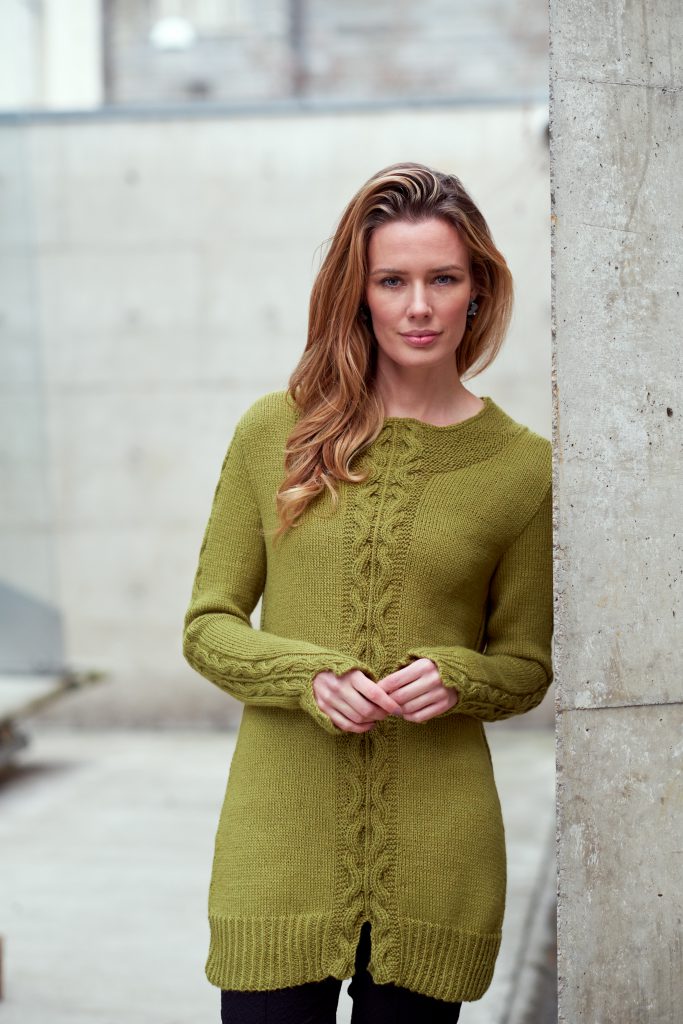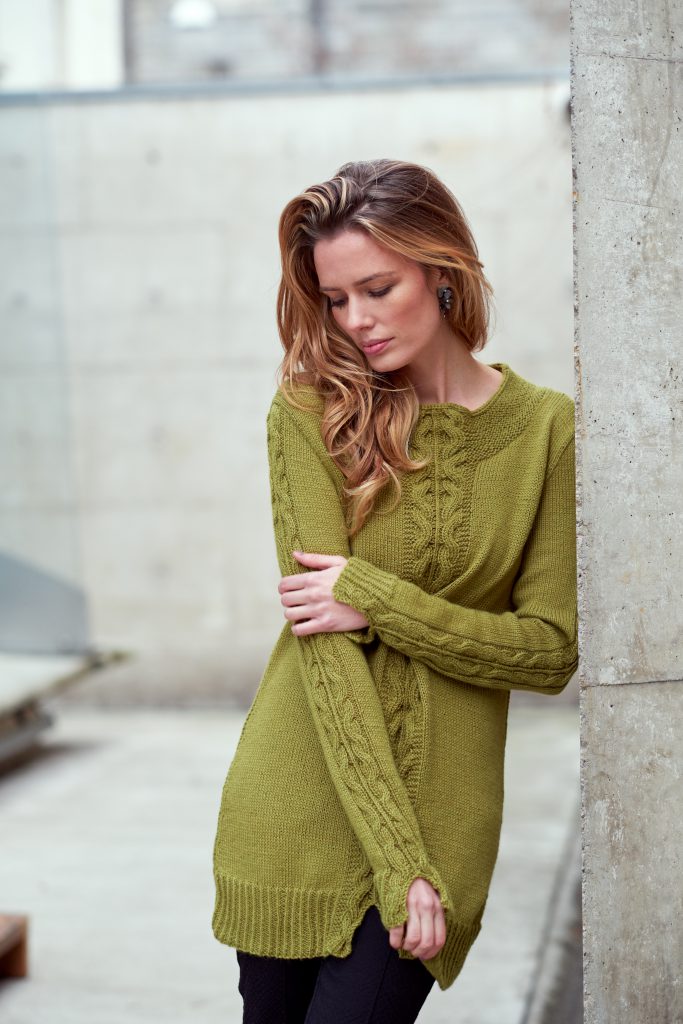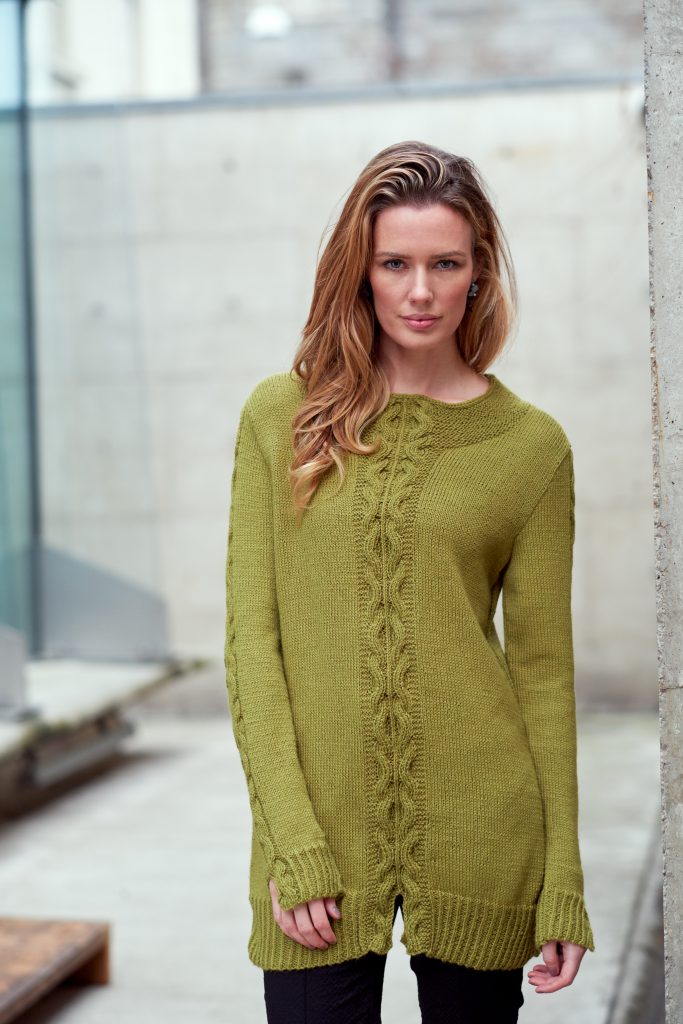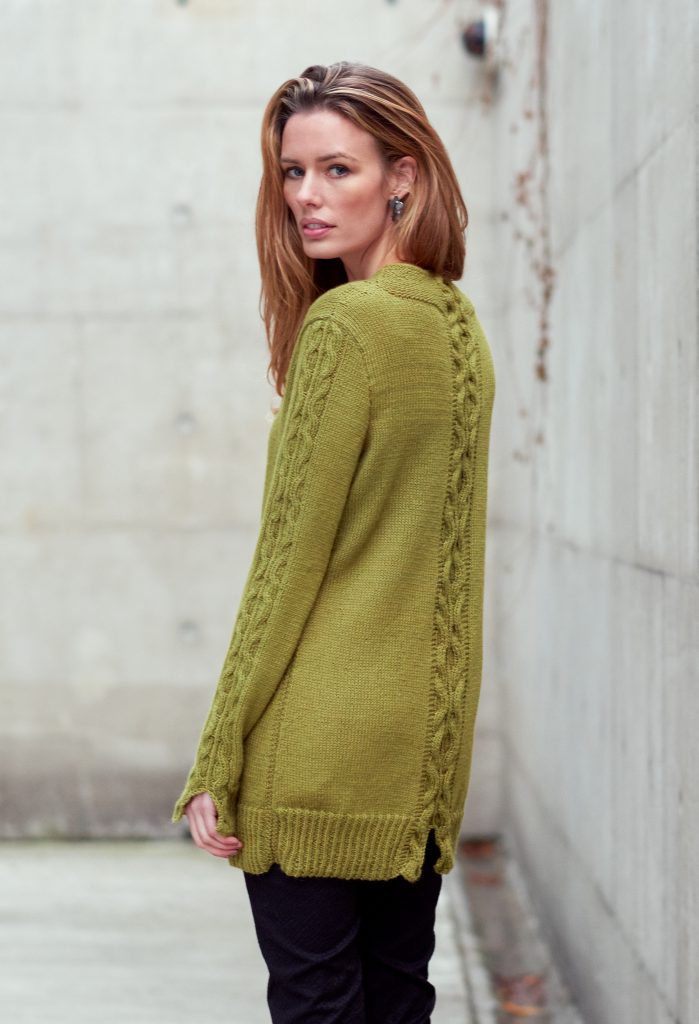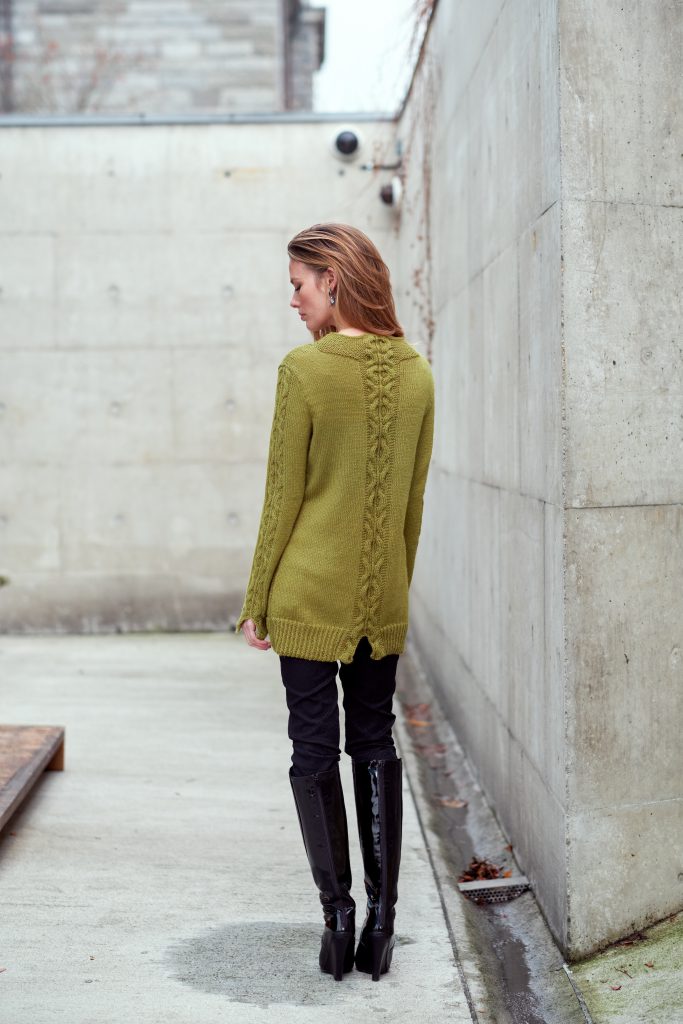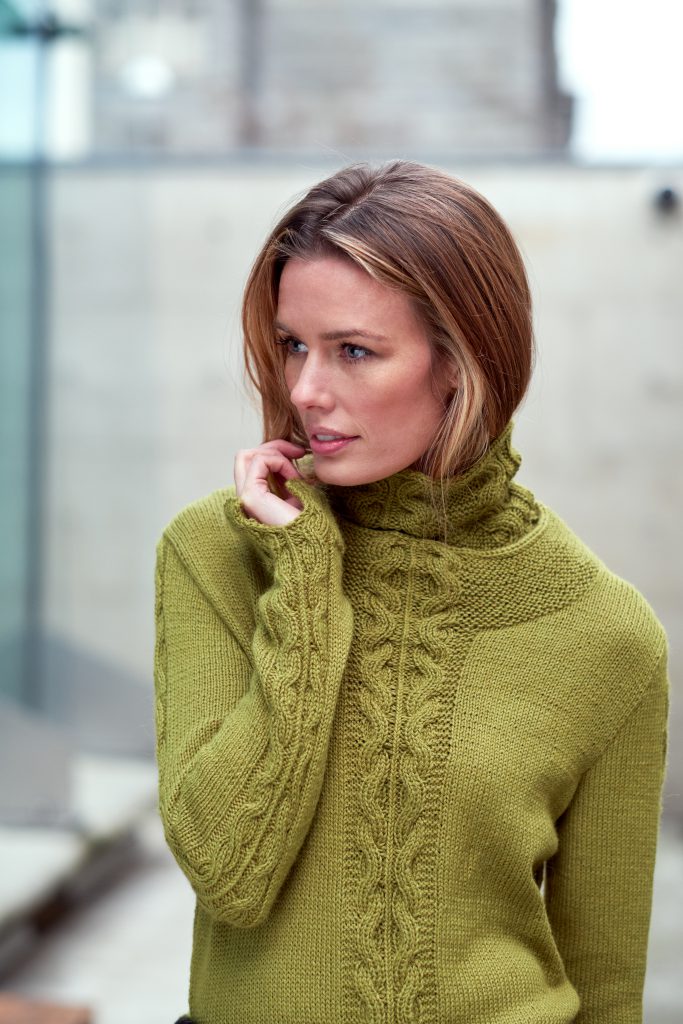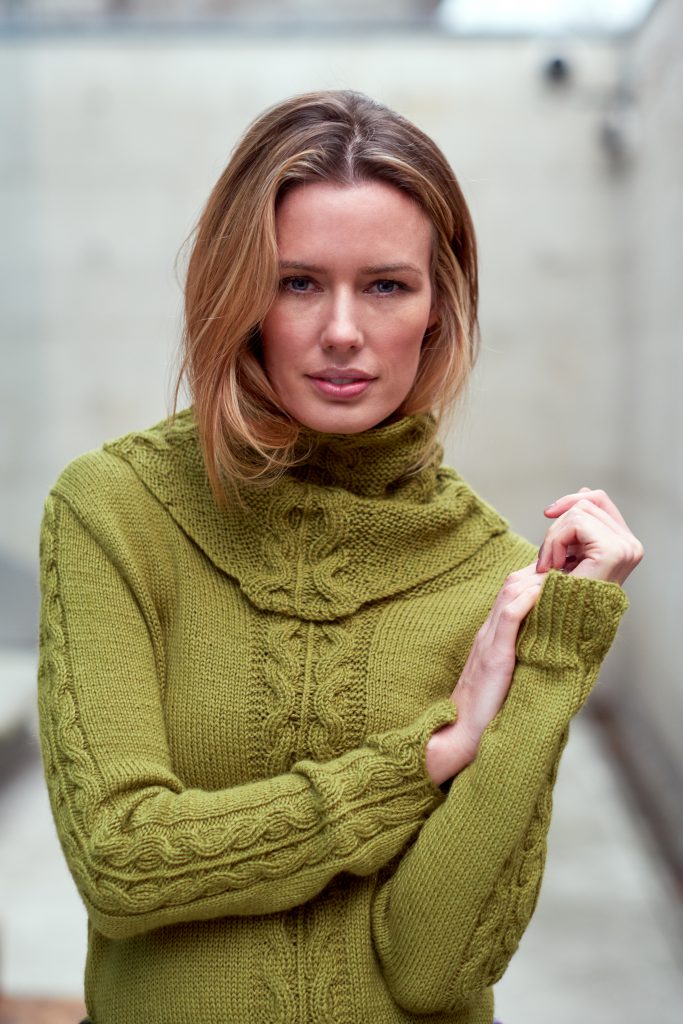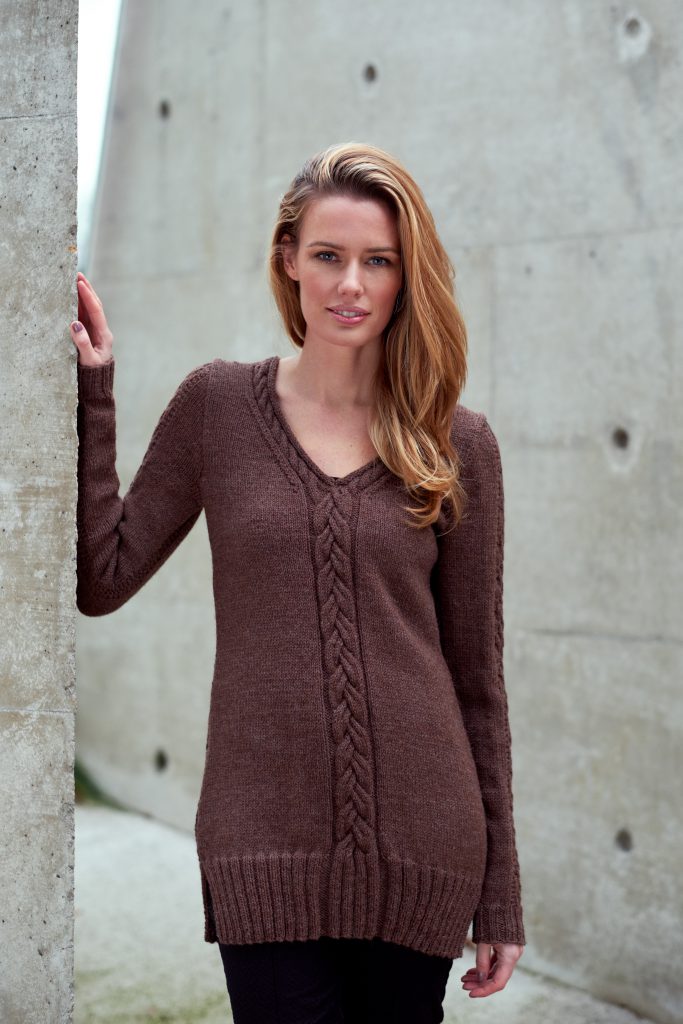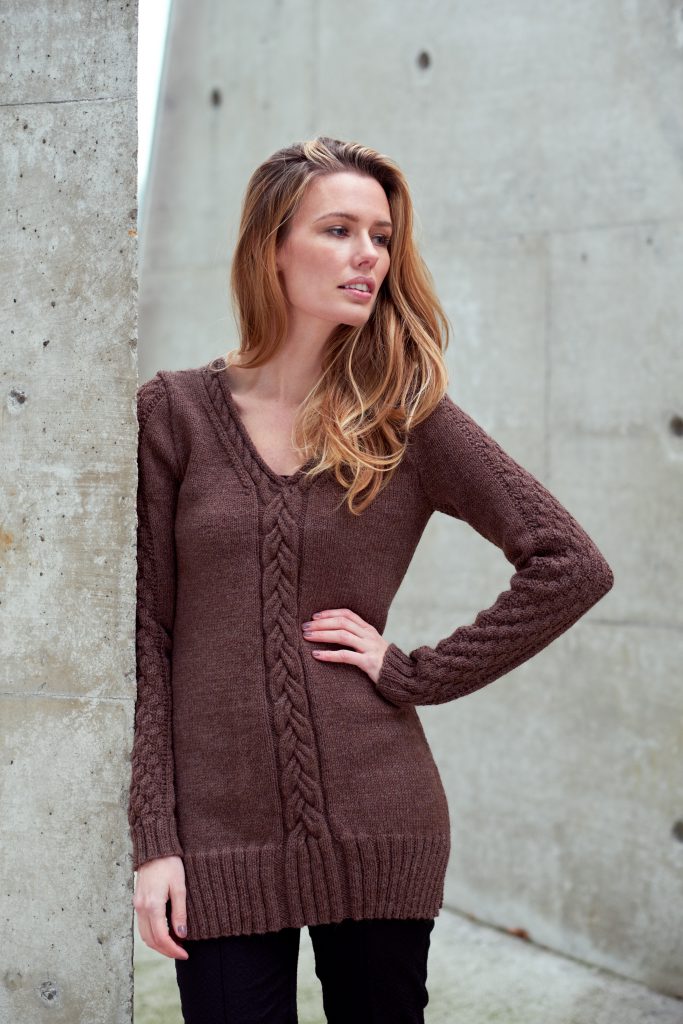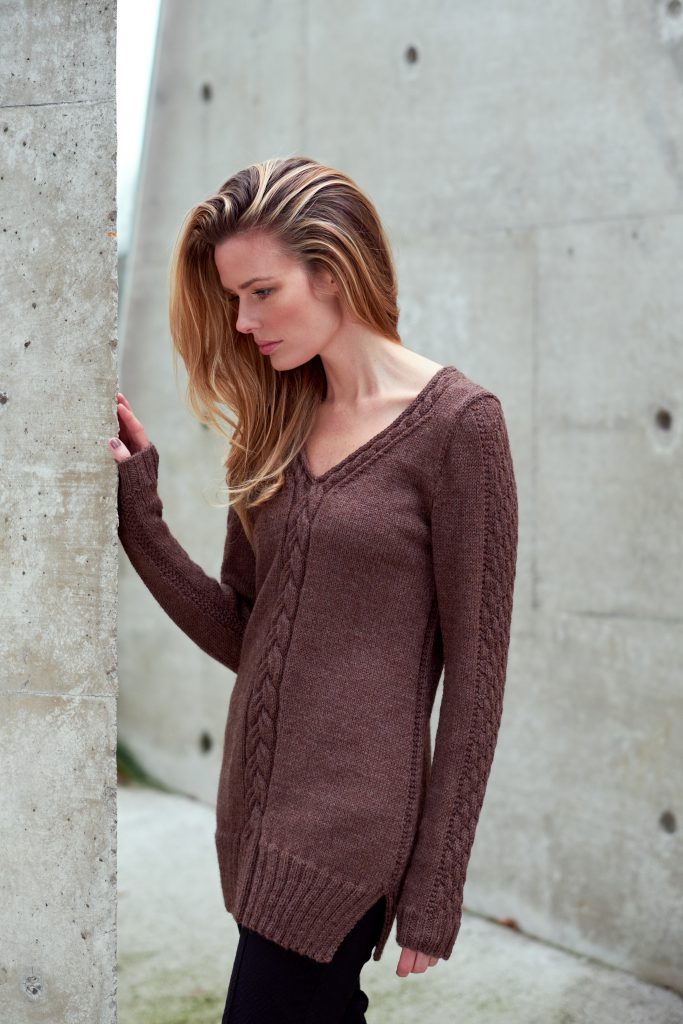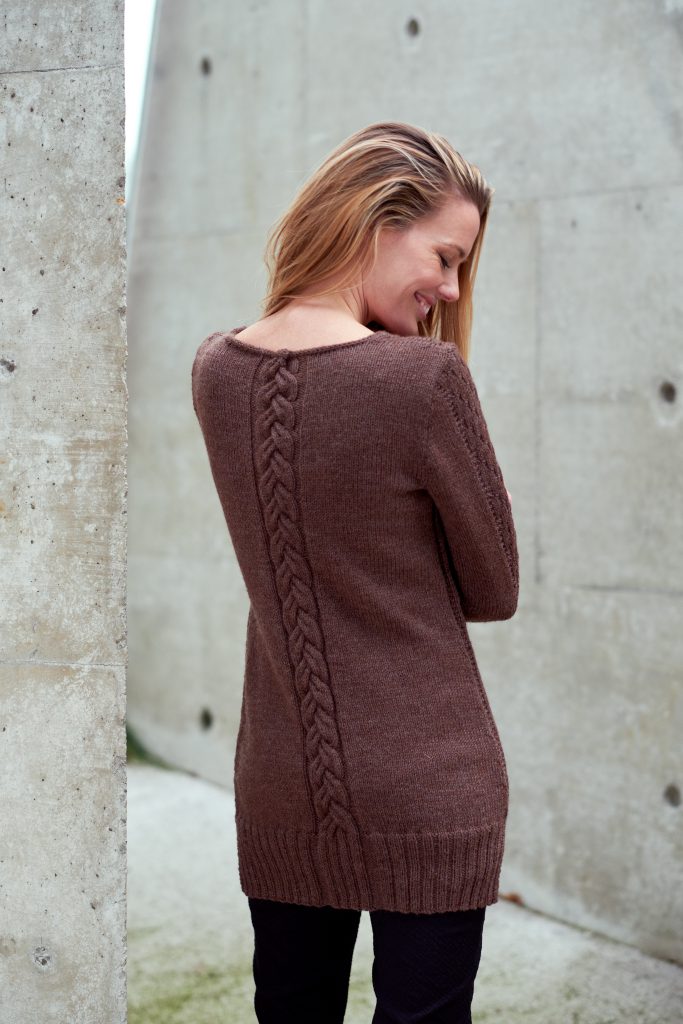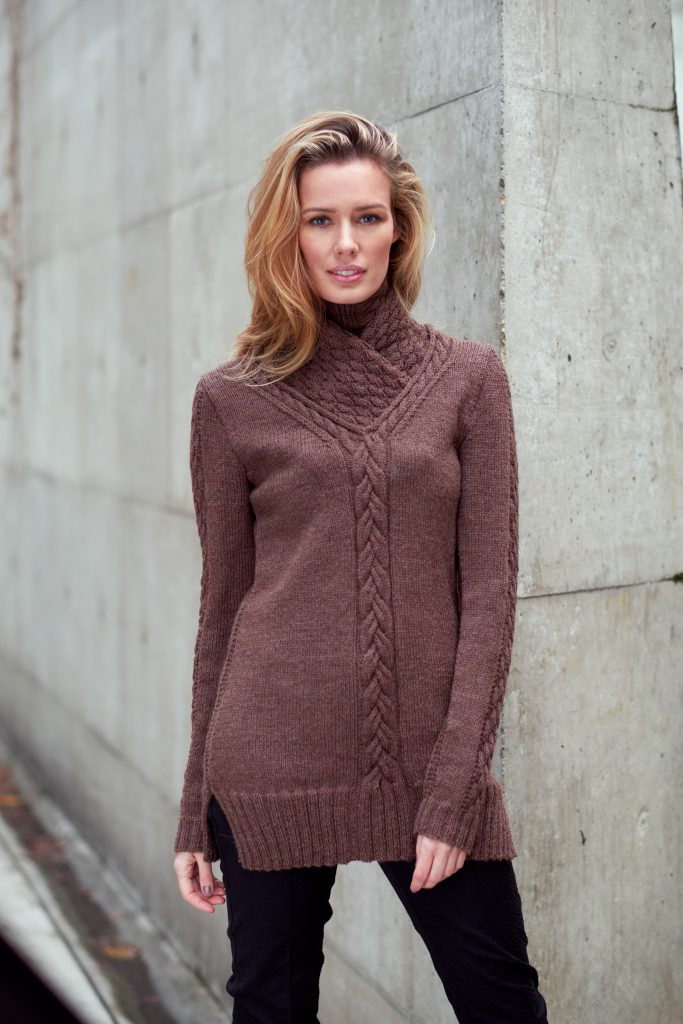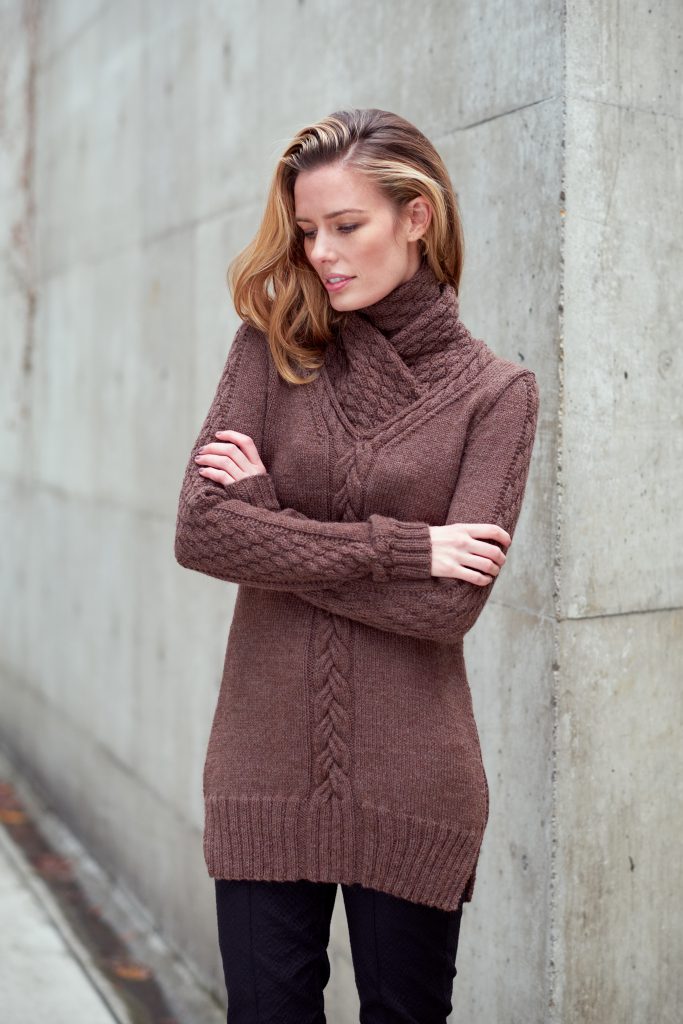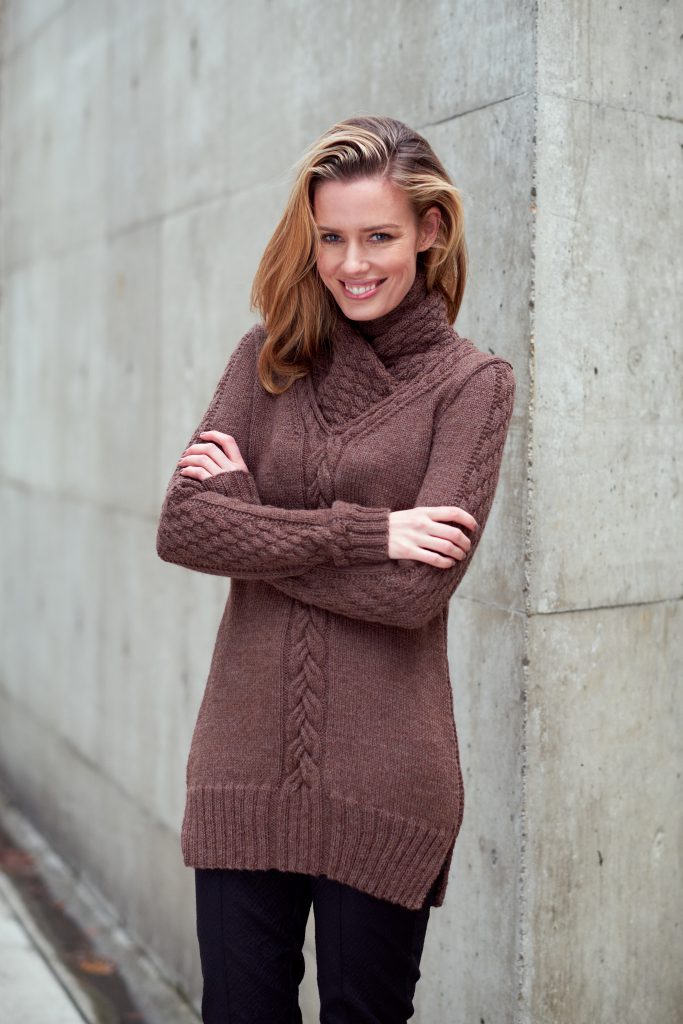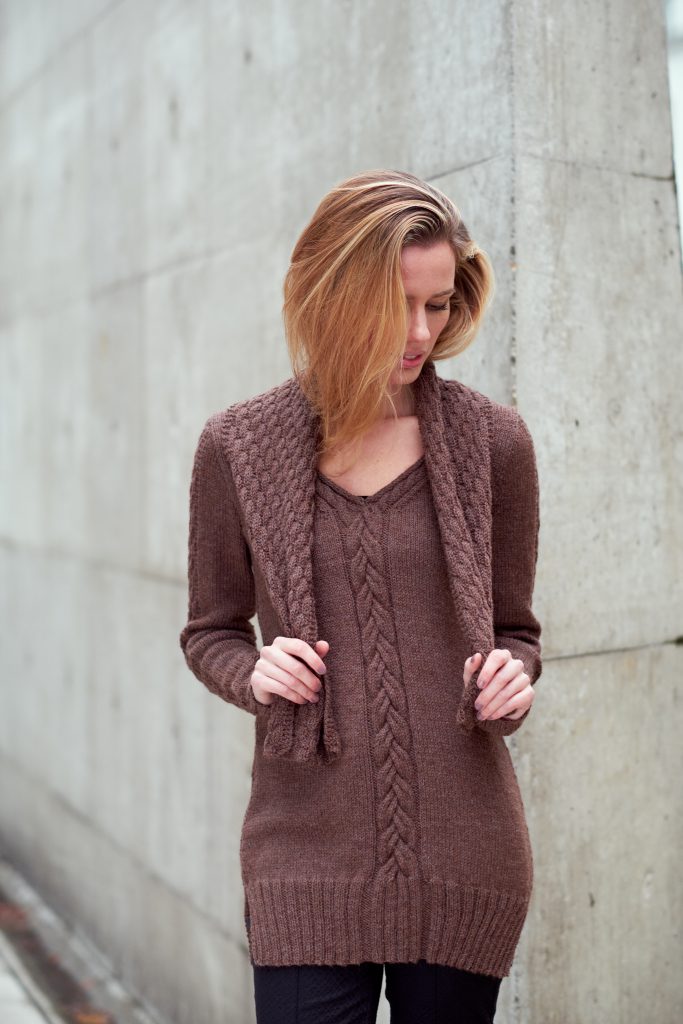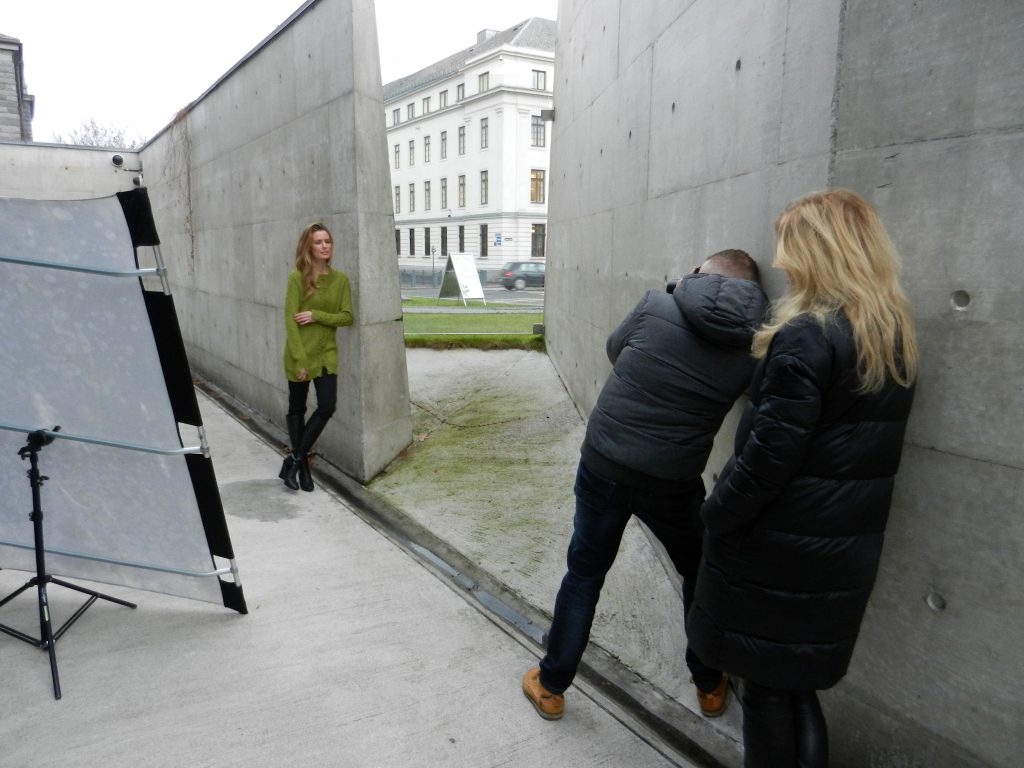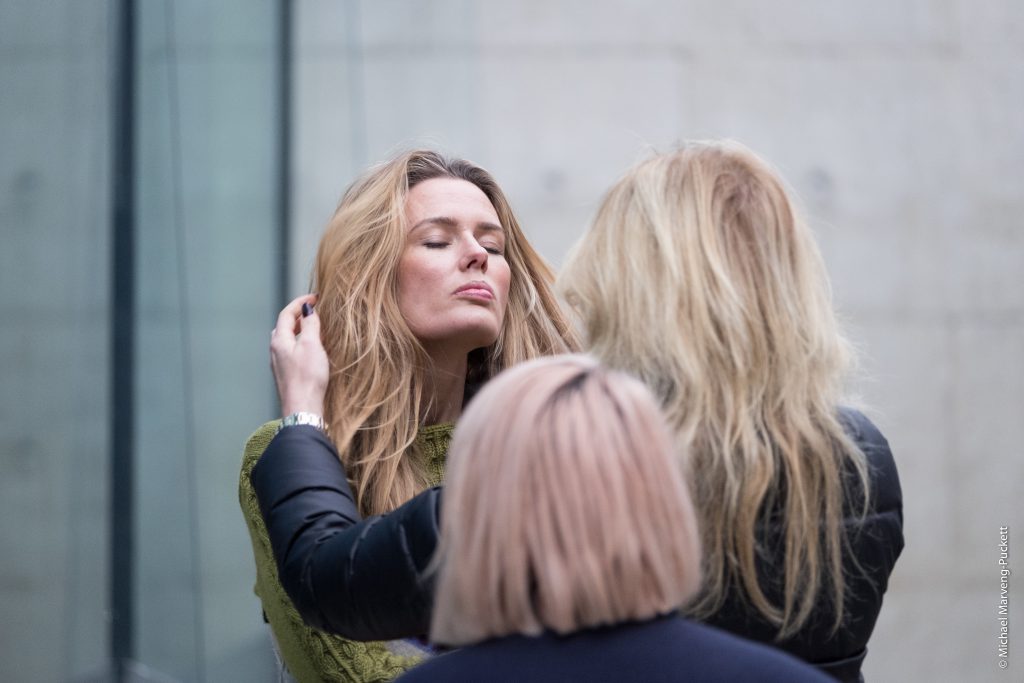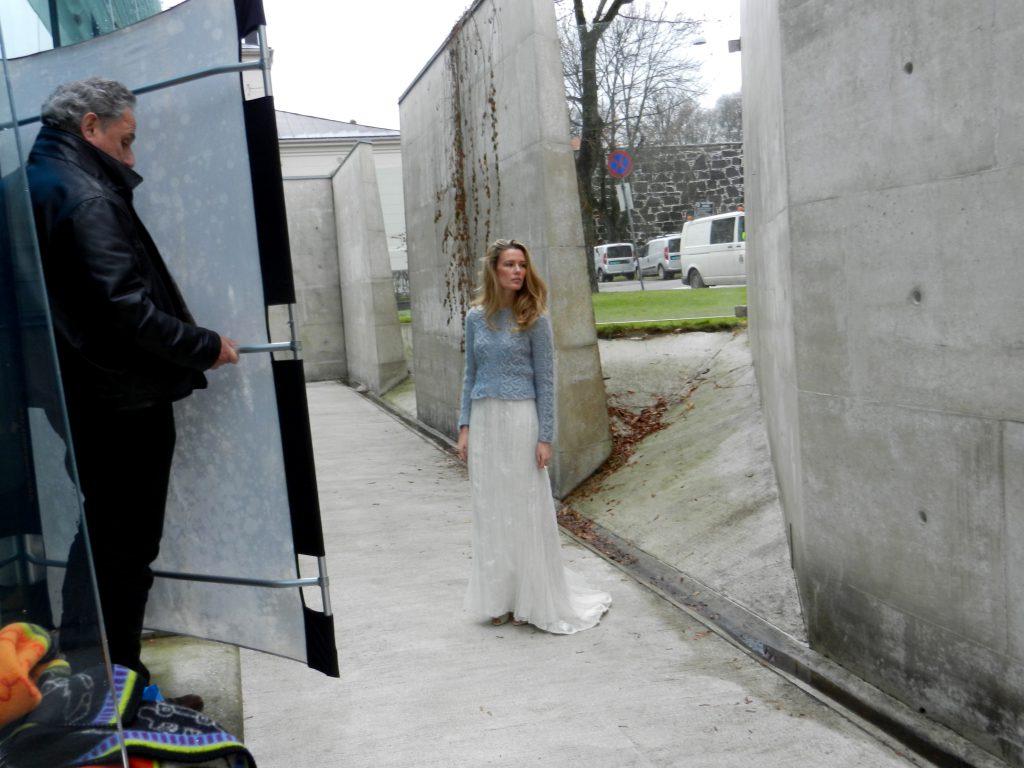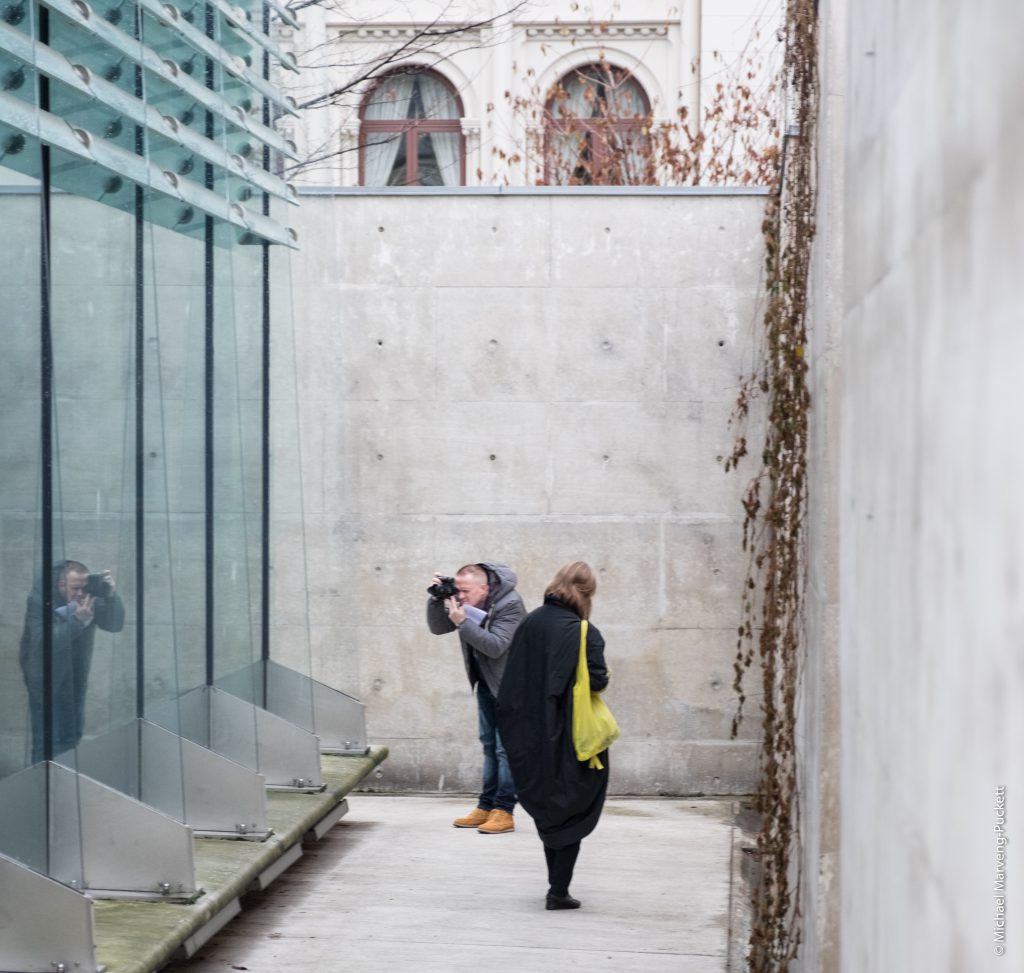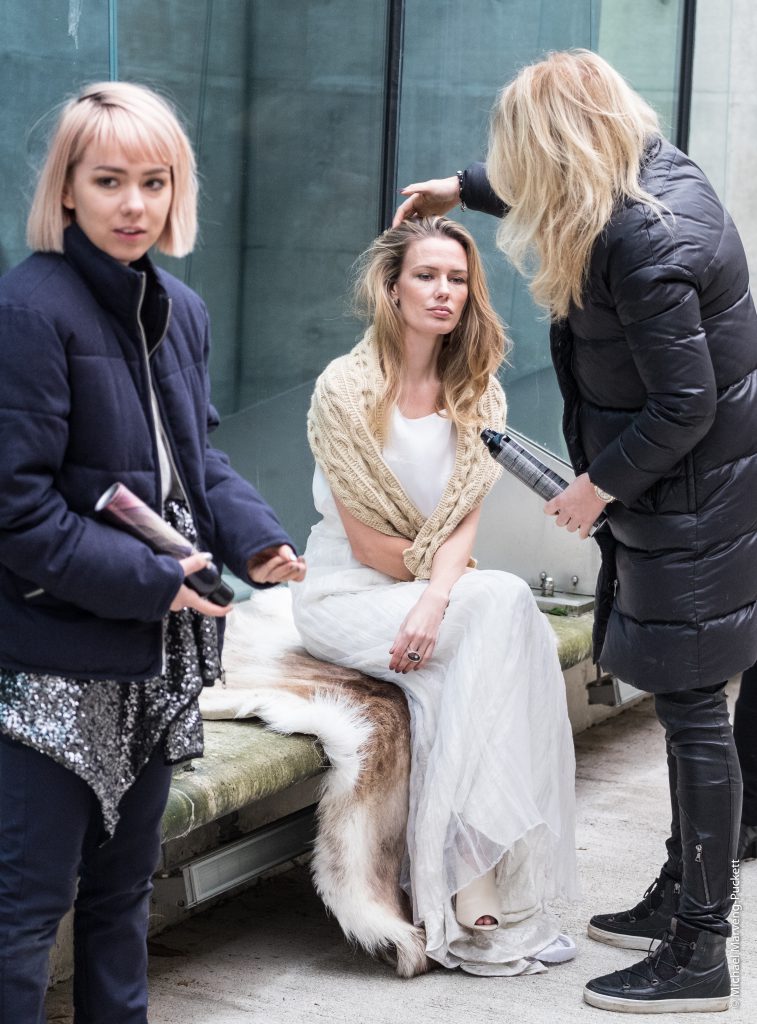As promised here are the photos of gorgeous Silje Andresen/Team Models with makeup & hair by Sissel Fylling and earrings by Kaja Gjedebo Design, brilliantly captured by Eivind Røhne at the National Museum – Architecture at the end of November. I decided to style the a-line sweater with black pencil trousers, to emphasise the shape of it. The cowl which I made to go with it, was also photographed and made it even more difficult to select photos, since there were so many stunning ones to choose from.
Named after the Norse godess with gorgeous hair tress remiscent of this cable. This a-line sweater has a cable vent on both the body and the sleeves. A high round collar finishes off the pullover. Why not add an extra cowl to feel extra cosy in. Hanasa is knitted in a divine silk and alpaca mixture for that lovely feel and sheen.
Du Store Alpakka Baby Silk is made of 80% baby alpaca, 20% mulberry silk and comes in 50 gram balls with 133 meters/145 yards. I choose the shade Green 307 for the sample, and was fortunate that Grete Jenssen, aka ma9 on Ravelry, could knit it for me using 3.5 mm/US 4 needles and with a gauge of 24 stitches and 32 rows. The yarn was kindly sponsored by House of Yarn.
The cable on the sleeve is a smaller version of the one on the body and does not have the bordering garter stitches on each side. Here you can also see the garter stitches in the side, which goes all the way down to the cast-on.
The back is similar to the front but with a higher neck. The Norwegian pattern will be published in Familien Kreativ in March, while the English pattern will be test knitted in my Ravelry group in June.
The cowl I only made in one size but you can easily adjust it if you want to. The sweater is graded in sizes XS to 2XL, with a bust circumference of 84 to 126 cm/33 to 49.5″ and a hip circumference of 98 to 140 cm/38.5 to 55″. Silje is wearing size S.
Here you see the cowl worn on top of the sweater. It is shaped between each of the four cables, and ends in an I-cord bind off, just as the collar on the sweater. Next in the series is Aylwen and all the different ways of wearing the loop.

